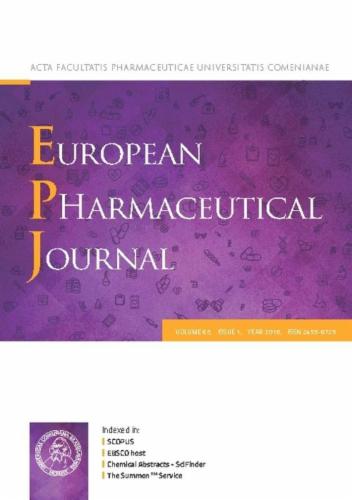DprE1 inhibitors: An insight into the recent developments and synthetic approaches
IF 4.3
3区 医学
Q1 PHARMACOLOGY & PHARMACY
引用次数: 0
Abstract
In the current medical era, the proliferation and dissemination of drug-resistant strains of Mycobacterium tuberculosis (Mtb) continue to pose a significant worldwide health hazard, necessitating the development of new and innovative medications to combat tuberculosis. Decaprenylphosphoryl-β-D-ribose 2′-epimerase (DprE1) is a crucial enzyme for cell wall synthesis in Mtb. Its importance is due to its eminent contribution in forming lipoarabinomannan and arabinogalactan, key components of the mycobacterial cell wall. The emergence of the DprE1 enzyme as a druggable target was based on inhibitors discovered in high-throughput screening. Since then, inhibitors with different types of chemical scaffolds have been reported for their activity against it. DprE1 inhibitors can be categorized according to the formation of a covalent or non-covalent bond in the enzyme's active site, causing a loss of its catalytic activity, leading to Mtb's demise. Herein, we describe diverse DprE1 inhibitors that have had anti-tubercular activity reported over the past fifteen years and till the present time.

DprE1抑制剂:对最新发展和合成方法的洞察。
在当前的医疗时代,耐药结核分枝杆菌菌株的扩散和传播继续在世界范围内构成重大的健康危害,因此有必要开发新的和创新的药物来防治结核病。decaprenylphospyl -β-D-ribose 2'- epimase (DprE1)是结核分枝杆菌(Mtb)细胞壁合成的关键酶。它的重要性是由于它在形成脂阿拉伯糖甘露聚糖和阿拉伯半乳聚糖方面的杰出贡献。DprE1酶作为药物靶标的出现是基于在高通量筛选中发现的抑制剂。从那时起,不同类型的化学支架抑制剂已被报道其对它的活性。DprE1抑制剂可以根据在酶的活性位点形成共价键或非共价键来分类,导致其催化活性丧失,导致Mtb的死亡。在这里,我们描述了在过去的15年中,直到现在,已经报道的具有抗结核活性的多种DprE1抑制剂。
本文章由计算机程序翻译,如有差异,请以英文原文为准。
求助全文
约1分钟内获得全文
求助全文
来源期刊
CiteScore
9.60
自引率
2.20%
发文量
248
审稿时长
50 days
期刊介绍:
The journal publishes research articles, review articles and scientific commentaries on all aspects of the pharmaceutical sciences with emphasis on conceptual novelty and scientific quality. The Editors welcome articles in this multidisciplinary field, with a focus on topics relevant for drug discovery and development.
More specifically, the Journal publishes reports on medicinal chemistry, pharmacology, drug absorption and metabolism, pharmacokinetics and pharmacodynamics, pharmaceutical and biomedical analysis, drug delivery (including gene delivery), drug targeting, pharmaceutical technology, pharmaceutical biotechnology and clinical drug evaluation. The journal will typically not give priority to manuscripts focusing primarily on organic synthesis, natural products, adaptation of analytical approaches, or discussions pertaining to drug policy making.
Scientific commentaries and review articles are generally by invitation only or by consent of the Editors. Proceedings of scientific meetings may be published as special issues or supplements to the Journal.

 求助内容:
求助内容: 应助结果提醒方式:
应助结果提醒方式:


